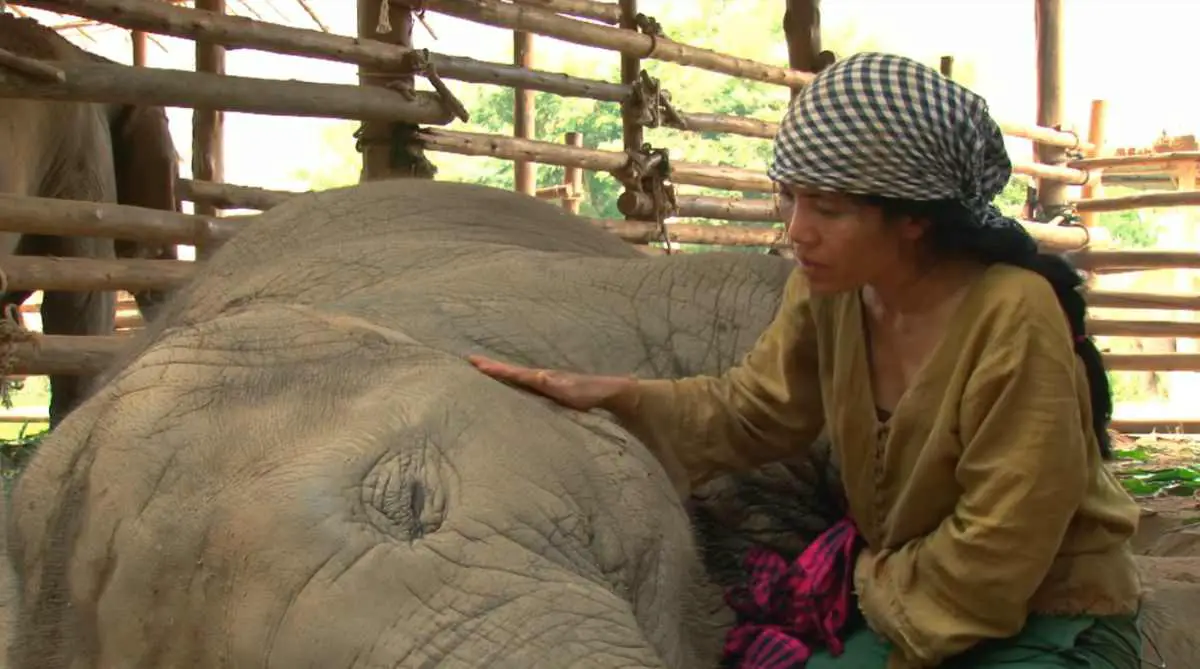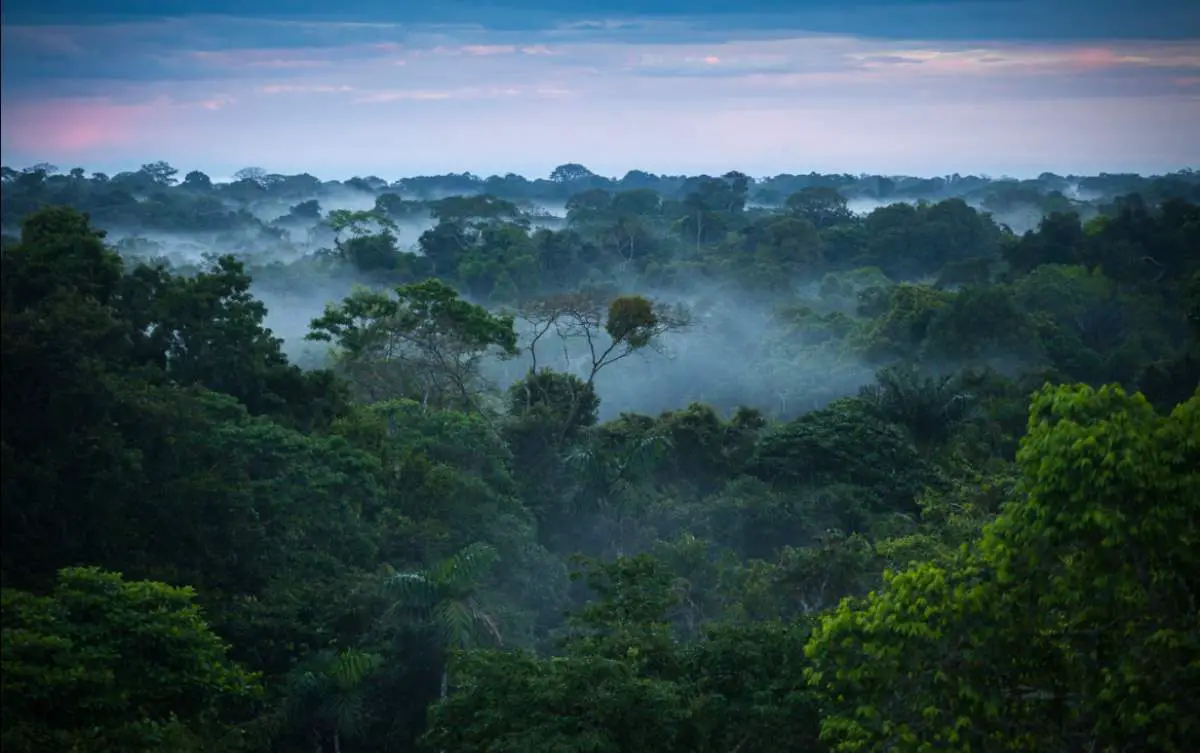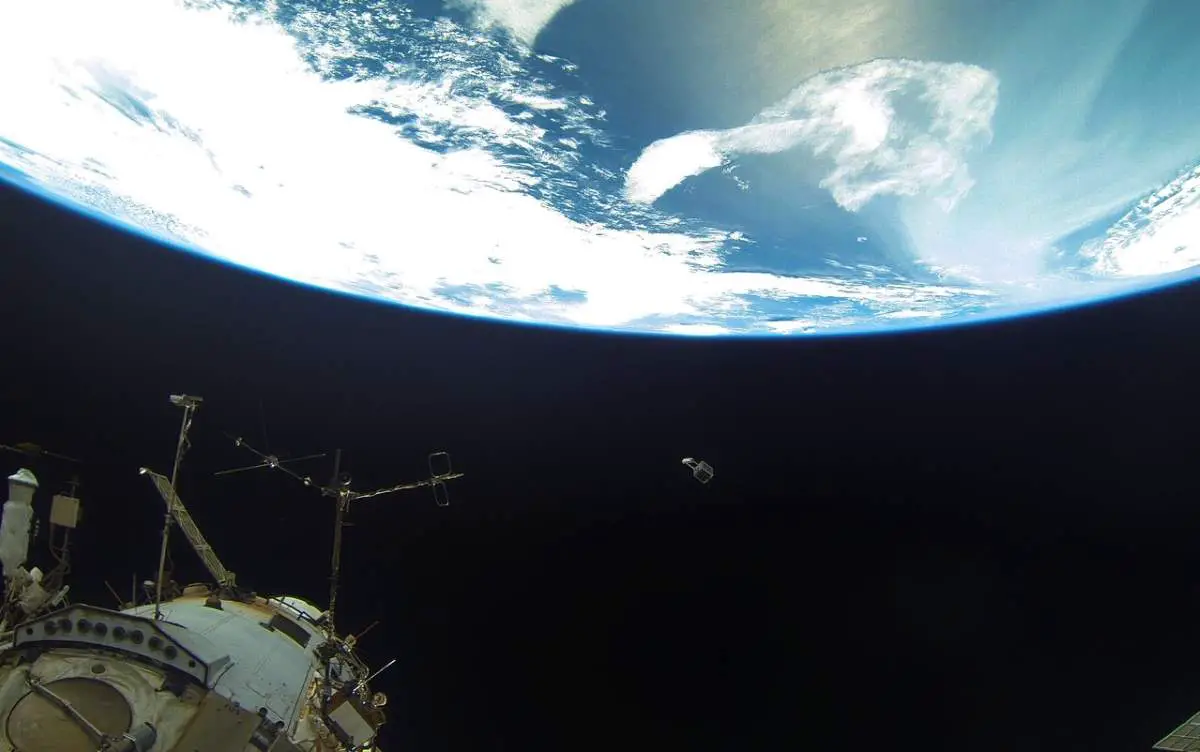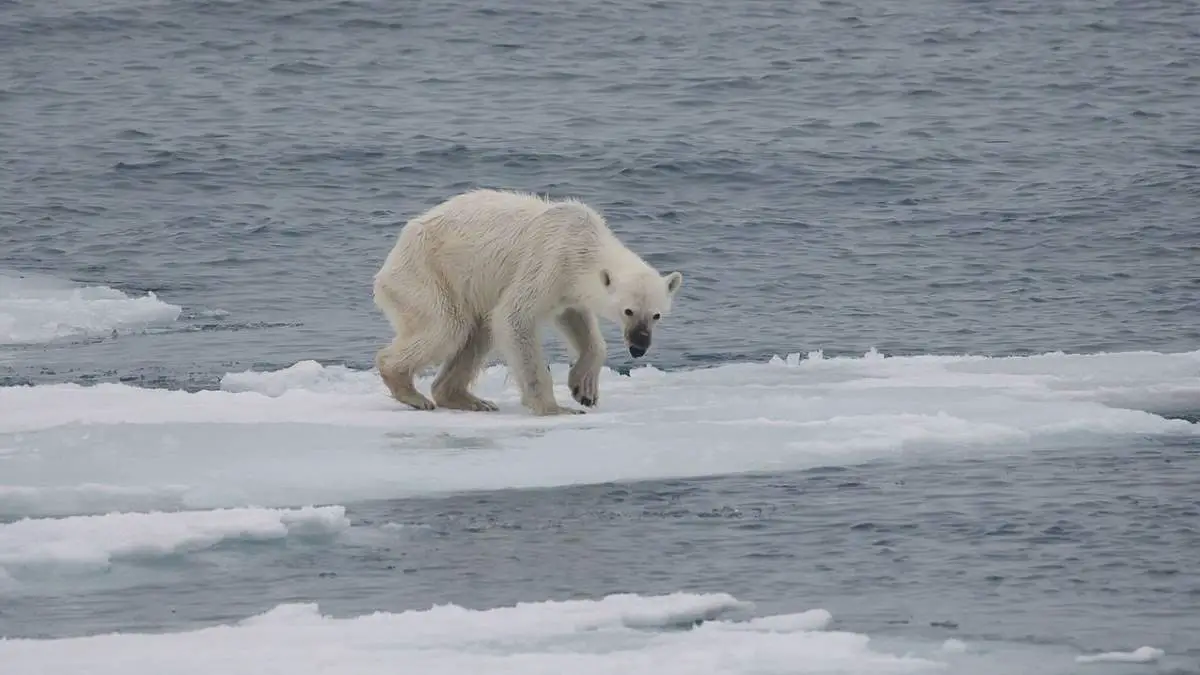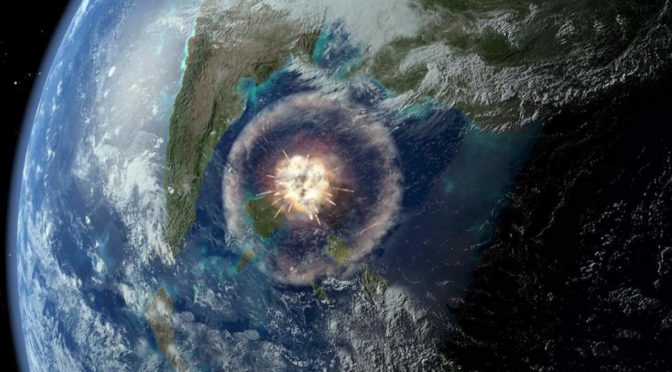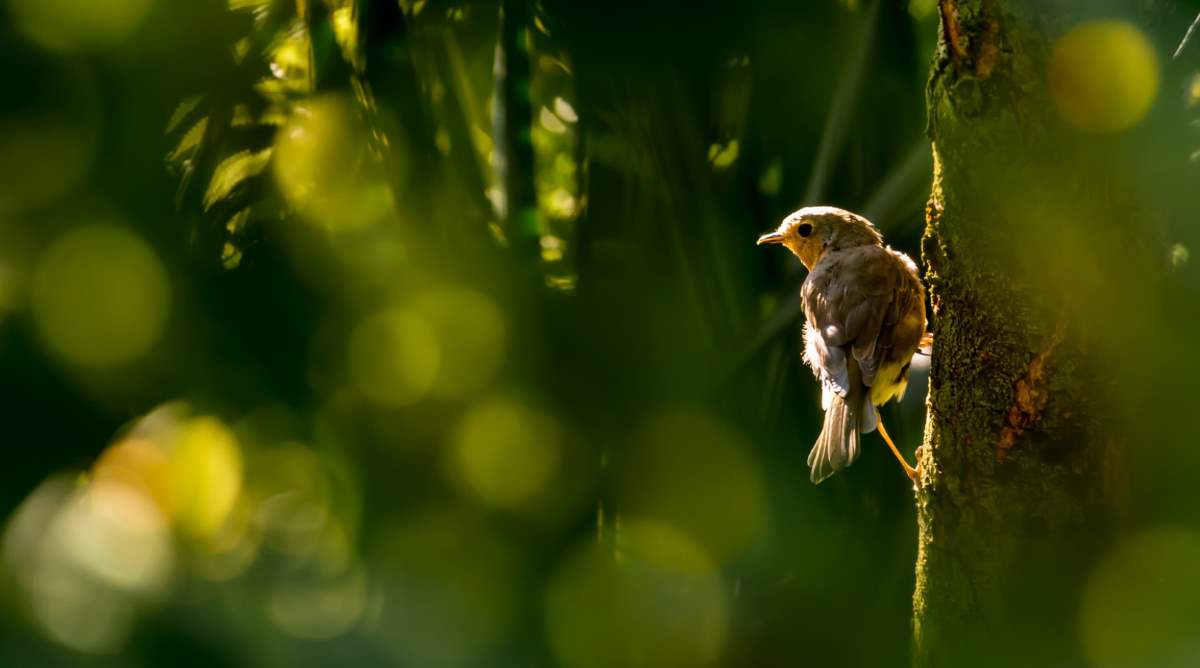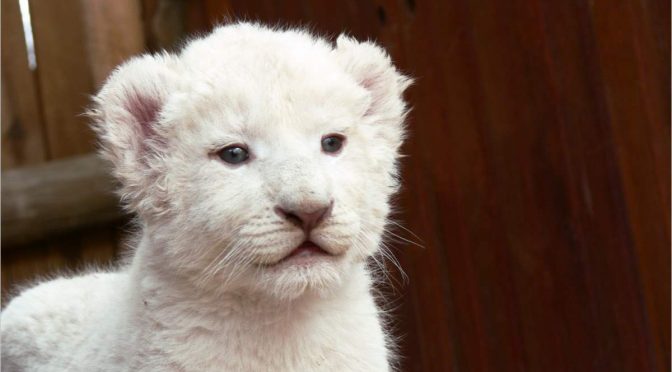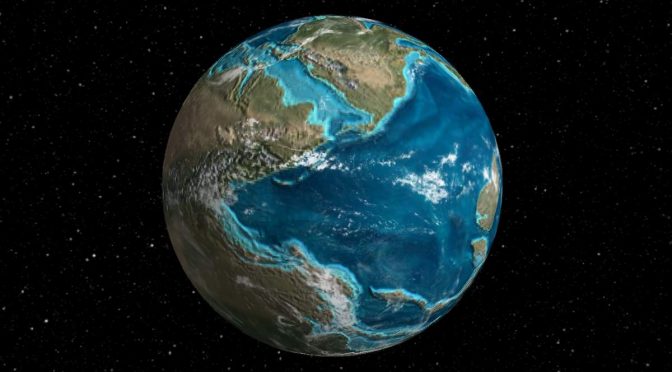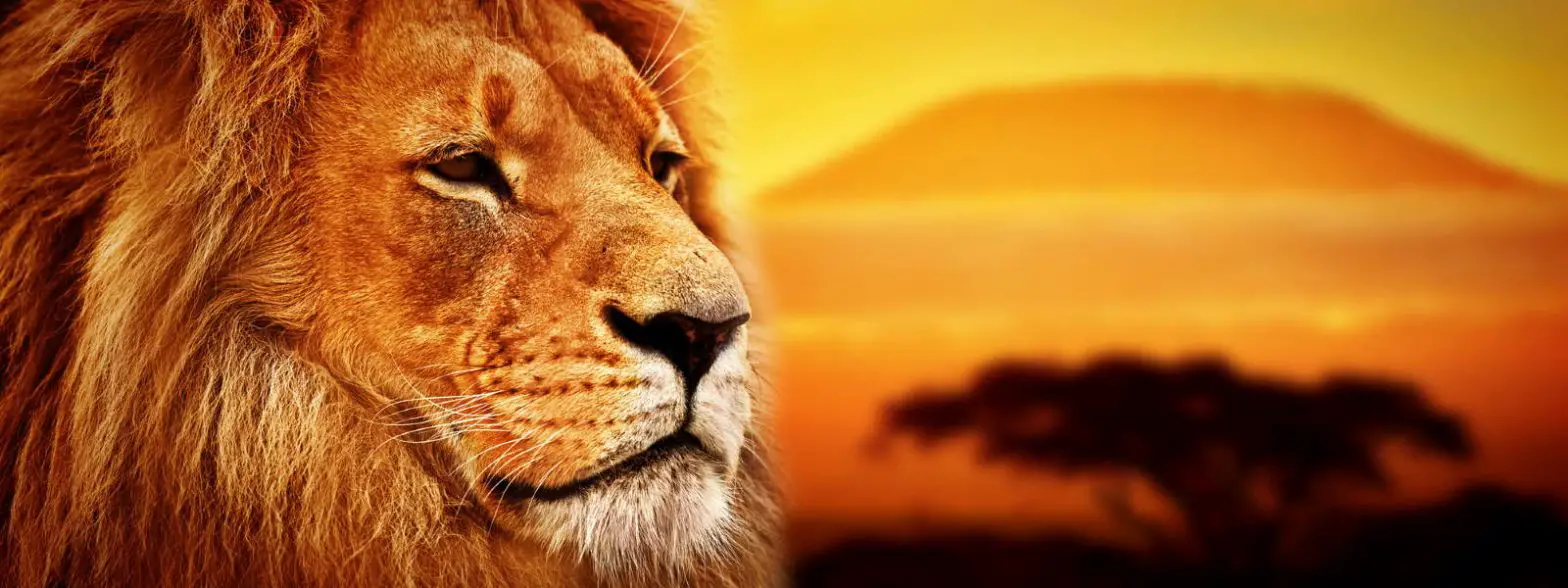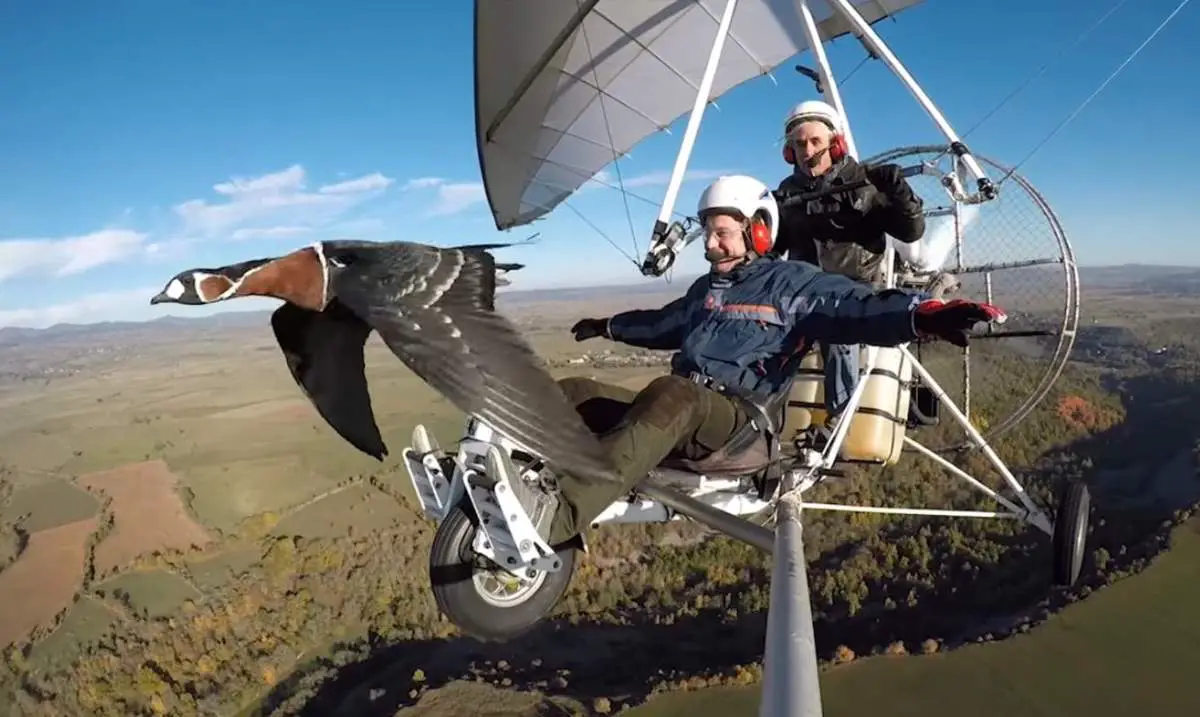Using a two-seater ultralight aircraft built by himself, Frenchman Christian Moullec flies with migrating birds since 1995. In that year, dubbed the “birdman“, Moullec, saw that lesser white-fronted geese were struggling with their migration from Germany to Sweden. Inspired by the work of the famous Austrian ethologist Konrad Lorenz (see notes 1), known as “the man who walked with geese”, he decided to help them and built his handmade aircraft.
Today, if the weather permits, he flies with birds almost every day and guides them through their journey. This stunning footage published by National Geographic shows Moullec, “the man who flies with migrating birds” guiding the flocks of vulnerable species in his ultralight and taking enthralled passengers with him. According to National Geographic, he takes tourists up to fly with birds from March through October.
